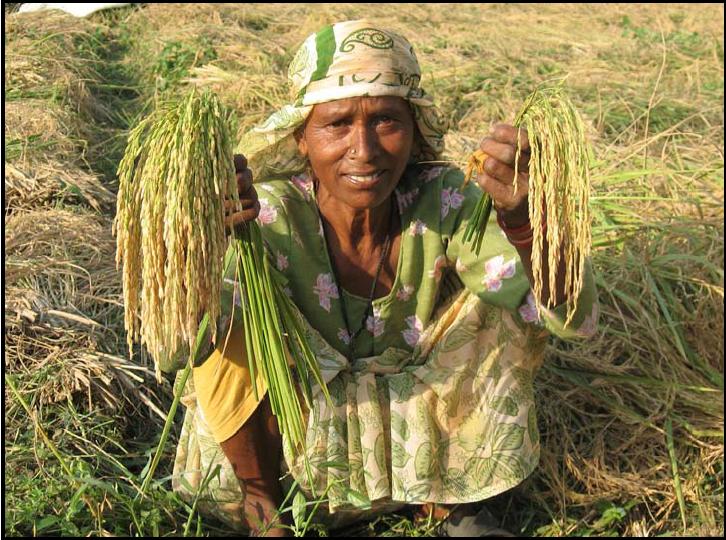Irrigation
Minor irrigation for land owned by dalits and adivasis - A presentation to National Advisory Council (2007)
Posted on 02 Sep, 2009 10:52 AMThis is a presentation is the output of the review and discussion done by the National Advisory Council (NAC) on the provision of the National Common Minimum Programme of the current UPA government. The mandate was managed by the Ministry of Water Resources (MoWR). The presentation looked at the scope and implementation aspects of minor irrigation schemes, potential for supporting schemes of Union Ministries for minor irrigation, existing schemes of MoWR, incentives for tribal and dalit communities, efforts for convergence, issues and points for consideration going forward.
System of Rice Intensification
Posted on 01 Sep, 2009 04:32 PMPart A: Improving Rice Productivity and saving Water through System for Rice Intensification (12 minutes)
The national symposium on system of rice intensification - Hyderabad (2006)
Posted on 29 Aug, 2009 03:31 PMThe National symposium on System of Rice Intensification: Present Status - Future Prospects was held on the 17-18th November 2006 in Hyderabad, Andhra Pradesh.
System of Rice Intensification, popularly known as SRI method, is gaining popularity among paddy farmers in several states in the country in recent times for its potential to save water and increase yields.
System of rice intensification in India: Innovation, history and institutional challenges (2006)
Posted on 29 Aug, 2009 03:09 PMThis report published by the WWF India and the Xavier Institute of Management, Bhubaneswar documents the history of the practice of SRI in India in the last few years and presents some of the institutional changes and challenges that SRI throws up. SRI is a fascinating case of rural innovation that has been developed outside the formal rice research establishment both in India and the rest of the world.
Experience sharing workshops on System of Rice Intensification (SRI) - A report
Posted on 29 Aug, 2009 02:55 PM This report available on the Watershed Support Services And Activities Network (WASSAN) site provides the details of three workshops organised by People's Science Institute (PSI) in October 2006 in the states of Uttarakhand and Himachal Pradesh as a first step towards sharing the experiences of System of Rice Intensification (SRI) method with the stakeholders group as well as assist the voluntary organisations in Uttarakhand and Himachal Pradesh to develop professional capabilities in the field of SRI method of paddy cultivation.
This report available on the Watershed Support Services And Activities Network (WASSAN) site provides the details of three workshops organised by People's Science Institute (PSI) in October 2006 in the states of Uttarakhand and Himachal Pradesh as a first step towards sharing the experiences of System of Rice Intensification (SRI) method with the stakeholders group as well as assist the voluntary organisations in Uttarakhand and Himachal Pradesh to develop professional capabilities in the field of SRI method of paddy cultivation.
India's experience with drought management: Changed perspectives and challenges
Posted on 29 Aug, 2009 02:43 PMThis document describes the drought situation in India over the years, the earlier perspective at drought management and the gradual change in perspective at managing droughts that evolved over the years.
The how, what, when of climate change: Background and basics
Posted on 29 Aug, 2009 02:09 PMClimate Change is a significant change in temperature, wind patterns and precipitation that occurs over a long period of time. Some of these changes occur in cycles over decades, hundreds, thousands and millions of years; some could be random occurrences.
Using water sustainably in agriculture: Increasing productivity and farm income
Posted on 29 Aug, 2009 01:29 PMAgriculture is a vital sector in India with about 60% of the population engaged in agricultural vocations and contributing to about 30% of the GDP. It consumes about 80% of water used in the country and 76% of the net irrigated area in the country is from ground water sources.
Efficiency of water use in Indian agriculture - Madras Institute of Development Studies
Posted on 29 Aug, 2009 01:10 PMThis paper by the Madras Institute for Development Studies presents estimates of the ‘consumptive use’ of water in crop production; the ratio of consumptive use to gross water utilization; and productivity per unit of consumptive use.
Arsenic contamination of irrigation water, soil and crops in Bangladesh: A paper from the UN Food and Agriculture Organisation
Posted on 29 Aug, 2009 12:53 PMArsenic contamination of irrigation water, soil and crops in Bangladesh: Risk implications for sustainable agriculture and food safety in Asia.





